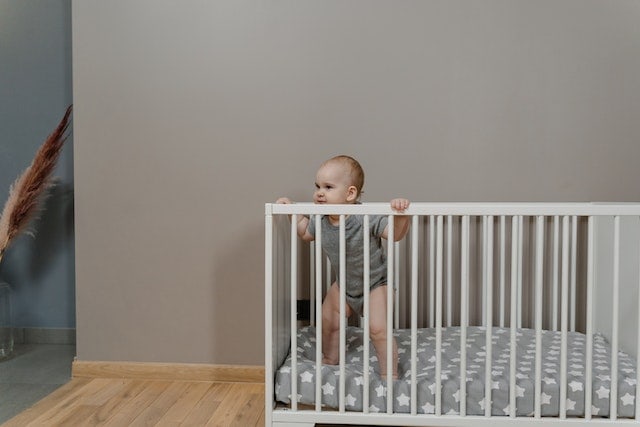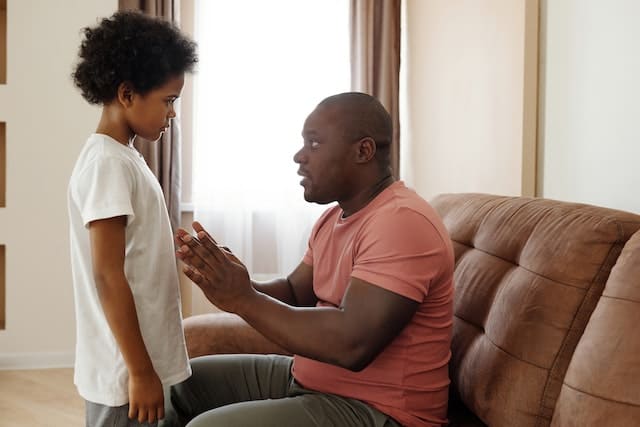Children are known to engage in a wide range of behaviors that may seem strange or unusual to adults. One such behavior is looking between their legs, which can be a cause for concern for parents and caregivers.
While this behavior may seem alarming to some, it is actually quite common among young children and can be a normal part of their development.
Understanding the behavior of children who look between their legs requires a deeper understanding of the developmental stages and physical changes that occur during childhood. As children grow and develop, they become increasingly aware of their bodies and the world around them.
This increased awareness can lead to a curiosity about their own bodies and the bodies of others, which can manifest in behaviors such as looking between their legs.
Key Takeaways
- Looking between their legs is a common behavior among young children and can be a normal part of their development.
- This behavior is linked to the physical and psychological changes that occur during childhood.
- Parents and caregivers can provide guidance and support to help children navigate this behavior in a healthy and appropriate way.
Understanding the Behavior
Exploring and Learning
Kids have a natural curiosity to explore the world around them. Looking between their legs is one way they can explore and learn about their own bodies. By doing so, they can discover their genitalia and understand how their body works.
It’s important for parents to understand that this behavior is a natural part of a child’s development and should not be discouraged or shamed.
Imitation and Identity
Children often mimic the behavior of adults and peers. Looking between their legs may be a way for them to imitate the behavior of adults using the bathroom or changing clothes. It can also be a way for them to explore and understand their gender identity.
It’s important for parents to create a safe and accepting environment for their child to explore their identity without fear of judgment or ridicule.
Sensory Exploration
Sensory exploration is an important part of a child’s development. Looking between their legs can provide a new sensation and help them understand their body in a different way.
However, it’s important for parents to set boundaries and explain appropriate behavior in public settings.
In conclusion, looking between their legs is a natural behavior for children to explore and learn about their bodies. It’s important for parents to understand the reasons behind this behavior and provide a safe and accepting environment for their child to explore without fear of shame or judgment.
Developmental Stages and the Behavior
1. Babies and Crawling
Babies are known for their curiosity and their tendency to explore their surroundings. One of the ways they do this is by crawling and looking between their legs. This behavior is a natural part of their developmental stage and helps them learn about their bodies and the space around them.
As babies crawl, they are learning about distance, depth, and perspective. They are also learning about cause and effect as they move their bodies and see how it affects their environment.
2. Toddlers and Walking
As toddlers begin to walk, they may continue to look between their legs, but this behavior is less common than during the crawling stage. Toddlers are now able to explore their environment in new ways and are more interested in standing up and walking around than looking between their legs.
However, some toddlers may still exhibit this behavior as they continue to learn about their bodies and the world around them.
3. Older Children and Stretching
As children grow older, they may continue to look between their legs, but this behavior is usually associated with stretching or warming up before physical activity. Looking between their legs helps to stretch the muscles in the legs and lower back, preparing the body for physical activity.
This behavior is common among athletes and dancers, who need to warm up their bodies before performing.
In conclusion, looking between their legs is a natural behavior that is part of a child’s developmental stage. As they grow and develop, this behavior may change or become less common, but it is still a natural part of their exploration and learning about their bodies and the world around them.
Physical Development and Body Awareness
1. Spatial Recognition
As children grow and develop, they become more aware of their bodies and how they move through space. This awareness is known as spatial recognition. It allows children to understand their position in relation to objects and people around them.
Looking through their legs is one way that children can explore their spatial awareness. By bending over and looking between their legs, they can see the world from a different perspective.
This activity can help them understand the relationship between their body and the surrounding environment.
2. Spine Curvature
Bending over to look between their legs can also affect a child’s spine curvature. The spine naturally curves in an “S” shape, and activities that involve bending over can temporarily alter this curvature.
While looking between their legs, children may flatten their lower back and round their upper back. This can cause discomfort or pain if done for extended periods. However, occasional bending over and looking through their legs is not likely to cause any long-term damage.
3. Physical Activity
Looking through their legs is often done during physical activity, such as playing games or doing gymnastics. These activities can help develop a child’s physical abilities, including strength, flexibility, and coordination.
By exploring their body’s capabilities and limitations, children can gain a better understanding of their physical selves. This can lead to increased body awareness, which is an essential part of overall development.
In summary, looking through their legs is a common activity for children that can help develop their spatial recognition, physical abilities, and body awareness. However, it is important to be mindful of spine curvature and not to overdo it.
Psychological Aspects of the Behavior
1. Curiosity and Exploration
Children are naturally curious and enjoy exploring their surroundings. Looking between their legs is one way for them to explore their own bodies and learn about themselves. This behavior is often seen in toddlers and young children who are just beginning to discover their own bodies.
3. Self-Soothing
Looking between their legs can also be a form of self-soothing for children. When children feel anxious or stressed, they may engage in this behavior to calm themselves down. This can be especially true for children who are experiencing potty training or other developmental milestones.
4. Public Behavior and Reaction
While looking between their legs is a normal behavior for young children, it can be alarming or uncomfortable for adults who witness it in public. It is important for adults to understand that this behavior is not sexual in nature and is a natural part of a child’s development.
Reacting negatively to this behavior can cause children to feel ashamed or embarrassed, which can have negative consequences for their self-esteem and body image. Instead, adults should calmly redirect the child’s attention to a more appropriate activity or location.
Overall, looking between their legs is a normal behavior for young children that can serve a variety of purposes. It is important for adults to understand and respond to this behavior in a supportive and non-judgmental manner.
Guidance for Parents
1. Talking to Your Child
If you notice your child looking between their legs, it’s important to talk to them about it in an age-appropriate manner. Use simple language and explain that it’s okay to explore their body, but that it’s important to do so in private.
Encourage them to come to you if they have any questions or concerns.
2. Non-Judgmental Approach
It’s important to approach the situation in a non-judgmental way. Avoid shaming or punishing your child for exploring their body. Instead, provide guidance and support. Let them know that it’s natural to be curious about their body, but that certain behaviors should only be done in private.
3. When to Seek Professional Help
In some cases, excessive or inappropriate exploration of the body may be a cause for concern. If you notice your child engaging in such behavior, consider seeking advice from a pediatrician or mental health professional.
They can provide guidance on how to address the situation and offer support for your child.
Remember, every child is different and may explore their body at different times and in different ways. By providing guidance and support, you can help your child navigate this natural part of their development.
Cultural Perspectives
1. Old Wives Tale and Superstitions
Looking between one’s legs is a common practice among children in many cultures, but it is often associated with old wives tales and superstitions. In some cultures, it is believed that looking between one’s legs can bring bad luck or cause harm to the child.
For example, in some parts of Africa, it is believed that looking between one’s legs can cause the child to be born with a cleft lip or palate. Similarly, in some parts of Asia, it is believed that looking between one’s legs can cause the child to be born with a birthmark.
2. Pregnancy and Sibling Predictions
In addition to old wives tales and superstitions, looking between one’s legs is also often associated with pregnancy and sibling predictions. In some cultures, it is believed that if a child looks between their legs, it means that they will soon have a new sibling.
Similarly, in some cultures, it is believed that if a pregnant woman looks between her legs, it can help predict the gender of the baby.
For example, if she sees a boy, it is believed that she will have a boy, and if she sees a girl, it is believed that she will have a girl.
Overall, looking between one’s legs is a common practice among children in many cultures, and it is often associated with old wives tales, superstitions, pregnancy, and sibling predictions. While some of these beliefs may seem far-fetched, they are deeply rooted in cultural traditions and beliefs, and they continue to be passed down from generation to generation.
Related: Why Does My Newborn’s Leg Shake
Frequently Asked Questions
What does it mean when a baby bends over in front of you?
When a baby bends over in front of you, it does not necessarily mean anything. Babies are naturally curious and like to explore their environment. Bending over and looking between their legs is just one way they can do this.
Why do babies bend over and look between their legs?
Babies bend over and look between their legs because it is a natural way for them to explore their body and the world around them. It is not uncommon for babies to be fascinated by their private parts, and they may spend time examining them.
What does it mean when a toddler does downward dog?
When a toddler does downward dog, it is often a sign that they are copying something they have seen or learned. Downward dog is a yoga pose that is often used to stretch and strengthen the body. Toddlers may mimic this pose as a way to explore their body and develop their physical abilities.
Why do babies do headstands?
Babies may do headstands as a way to explore their body and develop their motor skills. It is not uncommon for babies to be fascinated by their ability to balance and support their body weight. However, it is important to supervise babies when they are doing headstands to ensure they are safe and not at risk of injury.
Why do babies fold their legs?
Babies fold their legs for a variety of reasons. It may be a sign that they are tired or uncomfortable, or it may be a way for them to explore their body and develop their motor skills. Folding their legs can also be a way for babies to feel secure and comfortable.
What are some signs of pregnancy in toddlers?
It is not possible for toddlers to be pregnant. Pregnancy requires the fertilization of an egg by sperm, which is not possible in toddlers. If a toddler shows signs of abdominal swelling or discomfort, it is important to seek medical attention to determine the underlying cause.

Iesha is a loving mother of 2 beautiful children. She’s an active parent who enjoys indoor and outdoor adventures with her family. Her mission is to share practical and realistic parenting advice to help the parenting community becoming stronger.



